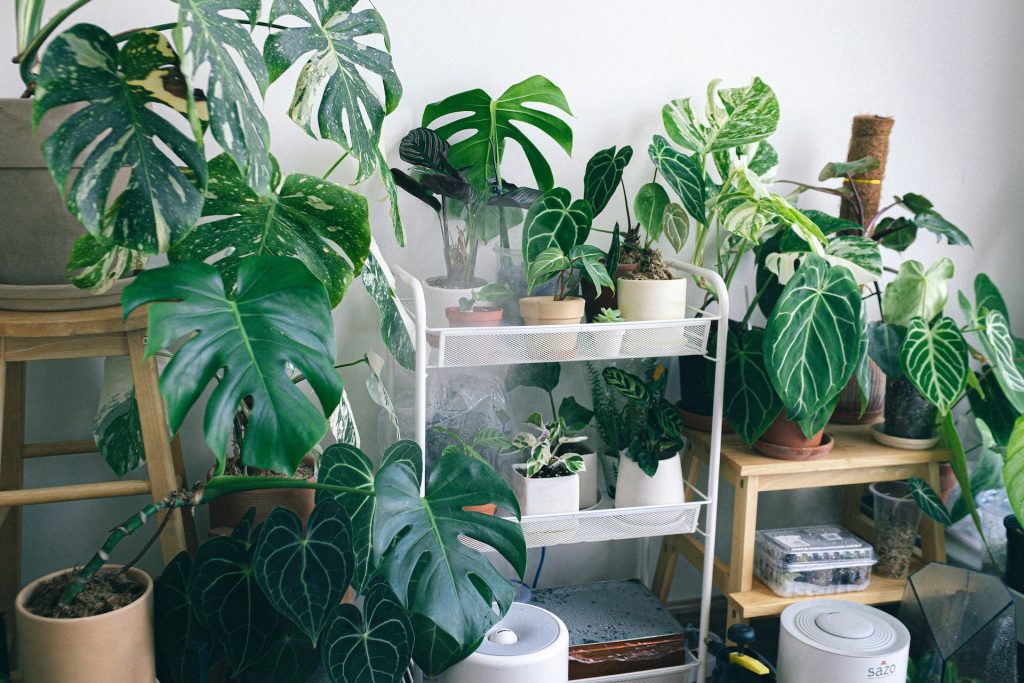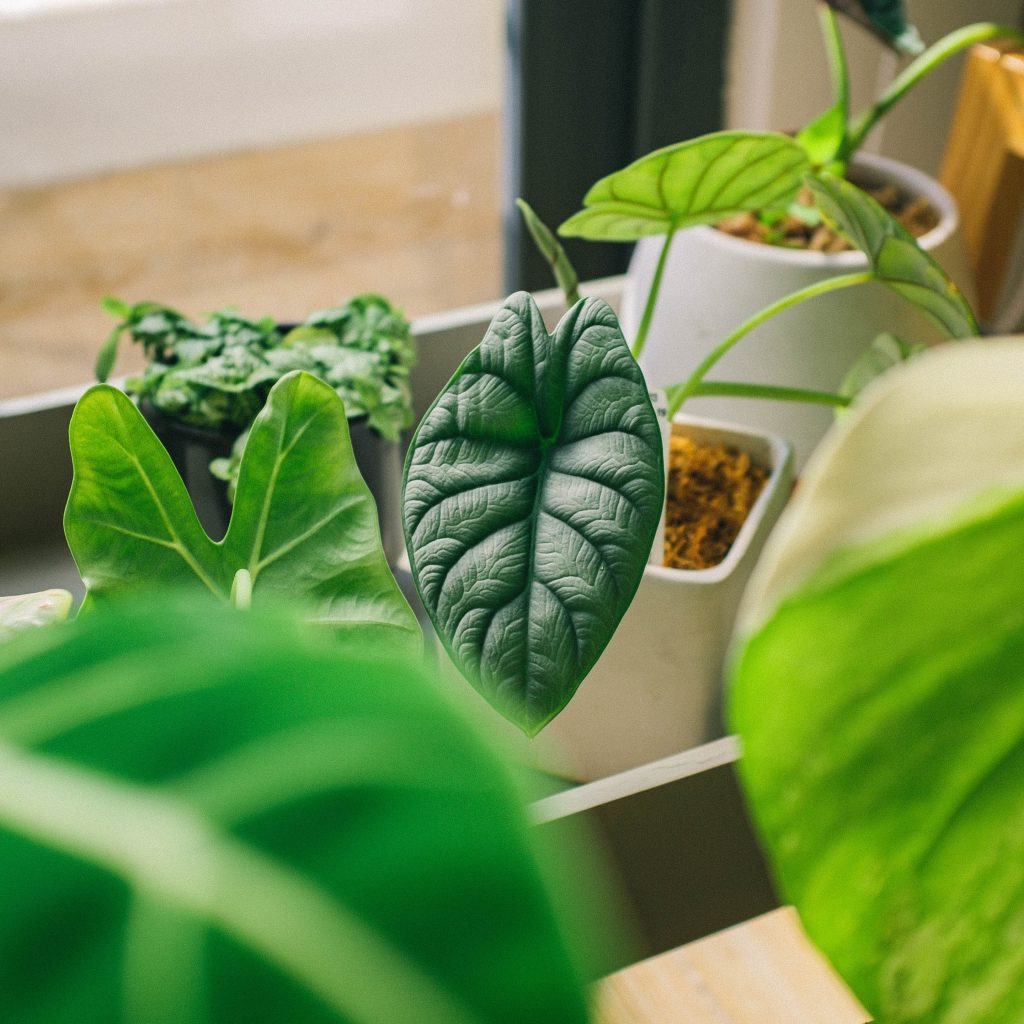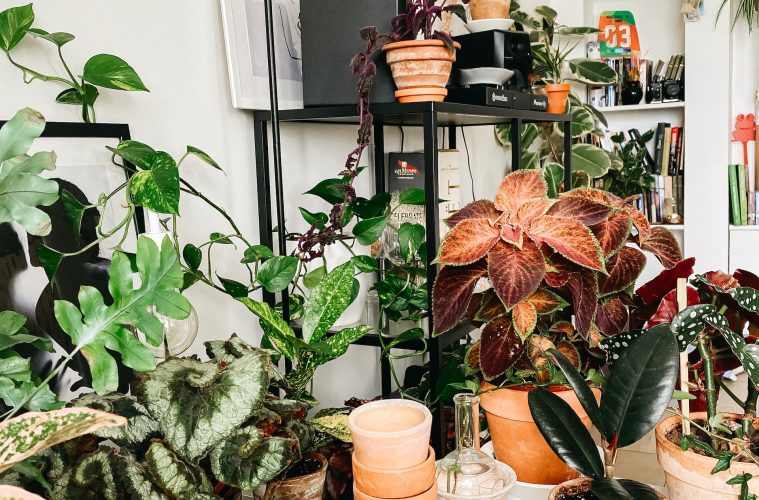The key characteristics of a maximalist indoor garden are vibrant colours, textures and patterns. The use of several different types of plants grouped together to form tapestries. The finished landscape should be harmonious rather than a fruit salad or mish-mash of things just thrown together. Maximalism is an art of living that can be applied to your indoor garden, as well.
Careful consideration should be taken when choosing plants and colours of flowers and leaves to define a pattern and bring together elements in a maximalist successful design.
How to get the maximalist indoor garden look
Unite the space with a common thread.
The easiest one to focus on is cour. Use one colour as the main thread throughout. Take white for example. Gather plants with white flowers, variegated white to cream leaves, white spotted leaves, silver to white foliage and blend them with other bold colours. As long as white is the constant throughout the tapestry, it will act as a bridge between all the plants in the space.
Play with unique shapes.

Image credit: Pexels
Geometric shapes are still in vogue and were used extensively in garden design in the Victoria era when gardens were abundant and packed to the brim. Formal clipped hedging was used to create an outline of the shapes and the inside filled with plants, many of which a contrasting bold colour.
Make it a calm flowing space.
Think of arranging flowers: there comes a time when it’s time to stop adding flowers to an arrangement. The idea is always to present each flower, bud, leaf or seed pod so that they can be seen and enjoyed and still have space around each of them. By adding too many into the bowl, the design becomes crowded and looks cluttered.
Basic garden principles to remember: form, texture, proportion and scale.

Image credit: Pexels
What goes for the overall look of a garden design can also be used very effectively in one garden bed. Layer plants so that you get different heights in the design. Combine a big-leafed hosta with a delicate fern, or a succulent Sansevieria with a round-leafed cascading Dichondra for example.
Featured image: Pexels
Article from the April 2022 edition of Garden&Home Magazine

